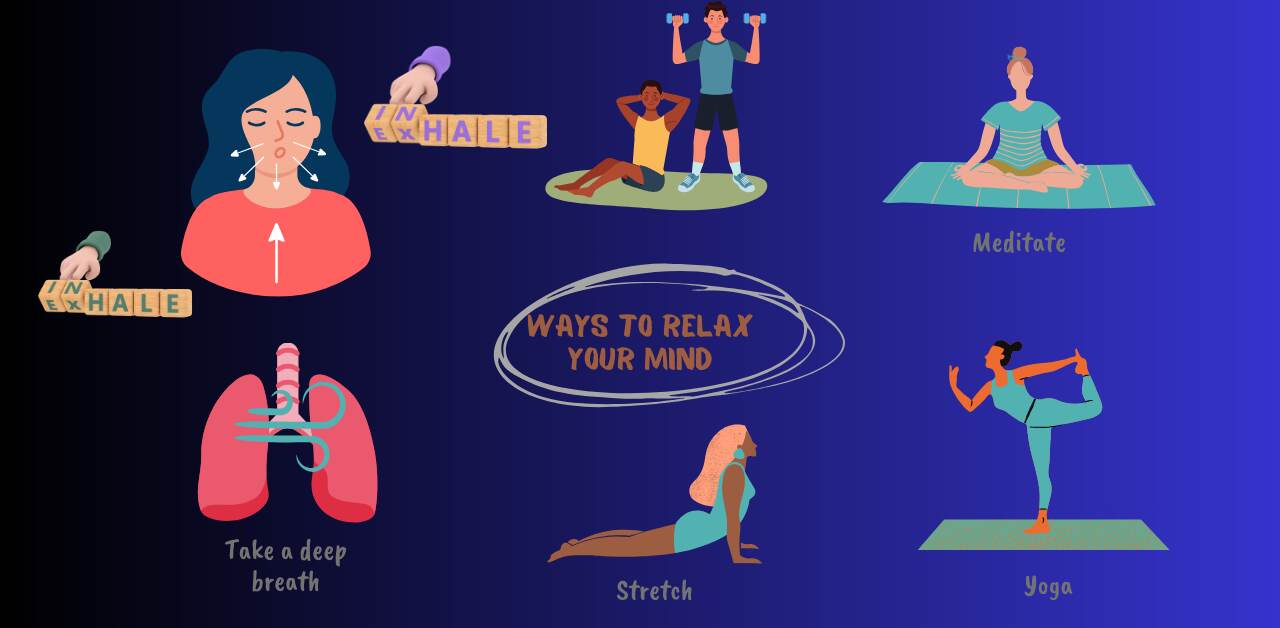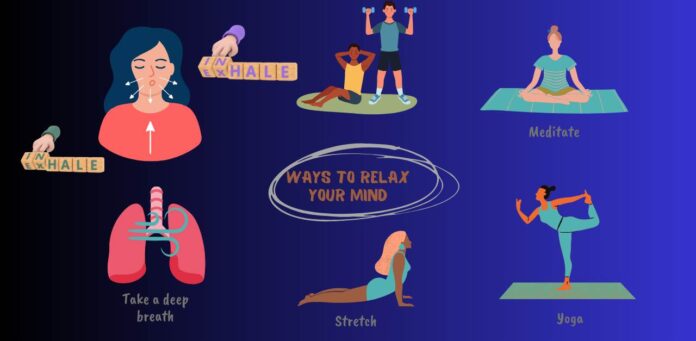Power of Breath exercises to lower blood pressure
Introduction:
In the fast-paced rhythm of modern life, where stress seems to be an unwelcome companion, the quest for natural remedies to promote health and well-being has gained significant momentum. Find a peaceful spot, settle into an appropriate sitting position, place one hand on your chest and the other on your abdomen, and focus on incorporating deep breaths through your nose that cause your abdomen to rise. This is how deep diaphragmatic breathing is practiced. Feel your belly drop as you slowly exhale, breathing through pursed lips. Keep doing this for a few seconds at a time, gradually increasing the time as you get more used to the technique.
Deep Diaphragmatic Breathing: A Foundation for Wellness
At the core of many effective breathing exercises lies the principle of deep diaphragmatic breathing. Also known as abdominal or belly breathing, this technique encourages the engagement of the diaphragm, a muscle located beneath the lungs. To practice deep diaphragmatic breathing, find a quiet space, sit or lie down comfortably, place one hand on your chest and the other on your abdomen, and focus on taking a deep breath through your nose and raising your abdomen. Feel your belly leave as you slowly exhale their breath through lips that are pursed. Repeat this process for several minutes, gradually extending the duration as you become more comfortable with the technique.
Pranayama: Ancient Wisdom for Modern Health
Derived from the ancient traditions of yoga, pranayama encompasses a variety of controlled breathing exercises designed to regulate the flow of life force, or prana, within the body. One such technique, alternate nostril breathing (Nadi Shodhana), has been associated with stress reduction and blood pressure management. To practice, sit comfortably, close one nostril with your thumb, and inhale deeply through the other nostril. With the tip of your ring finger closed, close the other nostril, let go of the first, and release your breath. Repeat on the opposite side and continue this cycle for several minutes. The achievement of rhythmic balance via pranayama may significantly affect your overall health.

Box Breathing: Creating Harmony through Symmetry
Box breathing, also known as square breathing, is a structured technique that involves inhaling, holding the breath, exhaling, and holding again—each for an equal count of seconds, forming a “box.” This method not only promotes mindfulness but has been linked to reductions in stress and blood pressure. Begin by inhaling for a count of four, holding for four, exhaling for four, and holding again for four. As you become more adept, you can gradually increase the count. This rhythmic and balanced approach to breathing has the potential to induce a calming effect on the nervous system.
Guided Imagery Breathing: Transporting the Mind for Healing
Incorporating the power of imagination, guided imagery breathing combines breath control with visualization to evoke a sense of peace and relaxation. Look for a peaceful area, shut your eyes, and focus on your breathing. As you inhale, envision a tranquil scene or a place that brings you joy. Allow the calming imagery to enhance the depth of your breath, and with each exhale, release tension and stress. The mind-body connection cultivated through guided imagery can contribute to the reduction of blood pressure over time.
Conclusion:
In the quest for natural ways to lower blood pressure and enhance overall well-being. The ancient wisdom of breathing exercises emerges as a beacon of hope. Whether through deep diaphragmatic breathing, Pranayama, box breathing, or guided imagery. The power of intentional breath holds the potential to bring balance to the body and mind. As you embark on this journey of self-discovery and health, remember that consistency is key. By adding these breathing techniques to your regular regimen. You may find a sustainable and holistic approach to maintaining healthy blood pressure levels. Ultimately paving the way for a more serene and vibrant life
Here are question and answer of Breathing exercises to lower blood pressure
Does Power Breathe reduce blood pressure?
Power Breathe is a respiratory muscle training device designed to strengthen the muscles involved in breathing. While it can enhance respiratory muscle endurance and performance, there is limited evidence to suggest a direct correlation between Power Breathe use and a significant reduction in blood pressure. It’s important to remember that controlling blood pressure requires a variety of decisions about one’s life, such as managing your stress, eating right, and regular physical activity. Before incorporating any device or technique into a blood pressure management routine, it’s advisable to consult with a healthcare professional.
Is there a breathing device to lower blood pressure?
While various breathing devices and techniques exist, there isn’t a specific device universally recognized to lower blood pressure. However Stress reduction techniques such as deep diaphragmatic breathing, slow paced breathing, and relaxation can help control blood pressure.
What is the 4-7-8 breathing method?
The 4-7-8 breathing method, also known as the Relaxing Breath technique, is a breathing exercise designed to promote relaxation and alleviate stress. Developed by Dr. Andrew Weil, the technique involves the following steps:
- Consider four slow, long breaths through your nose.
For counting 1,2,3,4,5,6 and, hold your breath. - Exhale completely and audibly through your mouth for a count of eight.This breathing pattern is repeated for four cycles. The 4-7-8 breathing method is often used as a quick and effective tool for managing stress and may contribute to a sense of calmness
What exercises are good for lowering blood pressure?
Several exercises are beneficial for lowering blood pressure, including:
- Aerobic Exercises: Activities like brisk walking, jogging, swimming, and cycling improve cardiovascular health and contribute to blood pressure regulation.
- Strength Training: Incorporating resistance training exercises, such as weightlifting, can have positive effects on overall cardiovascular health.
- Yoga: Practices like yoga and tai chi combine physical activity with relaxation techniques, promoting stress reduction and potential blood pressure management.
- Deep Breathing Exercises: Techniques like deep diaphragmatic breathing and the 4-7-8 method may contribute to relaxation and aid in blood pressure control.
- Before starting any exercise regimen, it’s crucial to consult with a healthcare professional, especially if there are pre-existing health conditions. Individualized exercise plans tailored to specific health needs can be more effective in managing blood pressure.
In just five minutes, how can my high blood pressure be lowered?
While it’s challenging to significantly lower blood pressure in just five minutes, certain relaxation techniques can offer immediate benefits. One such method is deep diaphragmatic breathing. Find a quiet space, sit or lie down comfortably, and focus on inhaling deeply through your nose, allowing your abdomen to rise. Feel the inside of your stomach drop as you gently release breath through pursed lips. Repeat this process for several minutes. While the effects may be more pronounced with consistent practice, even a brief session of deep breathing can help induce a sense of calmness and potentially contribute to a temporary reduction in blood pressure.
Which exercise is best to reduce blood pressure?
Aerobic exercises, such as brisk walking, jogging, swimming, or cycling, are considered highly effective in reducing blood pressure. These activities engage large muscle groups, improve cardiovascular health, and contribute to overall fitness. Try to get in at least 150 minutes a week, spread out over multiple days, of moderate-intensity aerobic exercise. Additionally, strength training exercises, yoga, and other forms of physical activity can complement aerobic exercise in managing blood pressure levels.
What is the best breathing exercise to lower blood pressure?
The best breathing exercise to lower blood pressure is subjective and can vary from person to person. However, deep diaphragmatic breathing, also known as abdominal or belly breathing, is widely recognized for its effectiveness. This technique involves inhaling deeply through the nose, allowing the abdomen to rise, and exhaling slowly through pursed lips. By engaging the diaphragm, this practice promotes relaxation, reduces stress, and contributes to a gradual decrease in blood pressure levels.
Conclusion:
In the quest for natural ways to lower blood pressure and enhance overall well-being. The ancient wisdom of breathing exercises emerges as a beacon of hope. Whether through deep diaphragmatic breathing, Pranayama, box breathing, or guided imagery. The power of intentional breath holds the potential to bring balance to the body and mind. As you embark on this journey of self-discovery and health, remember that consistency is key. By adding these breathing techniques to your regular regimen. You may find a sustainable and holistic approach to maintaining healthy blood pressure levels. Ultimately paving the way for a more serene and vibrant life





[…] are more techniques available for use to stop an anxiety attack. Relaxation techniques Deep breathing exercises Grounding techniques Cognitive-behavioral therapy and […]
[…] Deep breathing exercises involve inhaling slowly through your nose, holding your breath briefly, and exhaling slowly through your mouth to promote relaxation and alleviate stress. […]